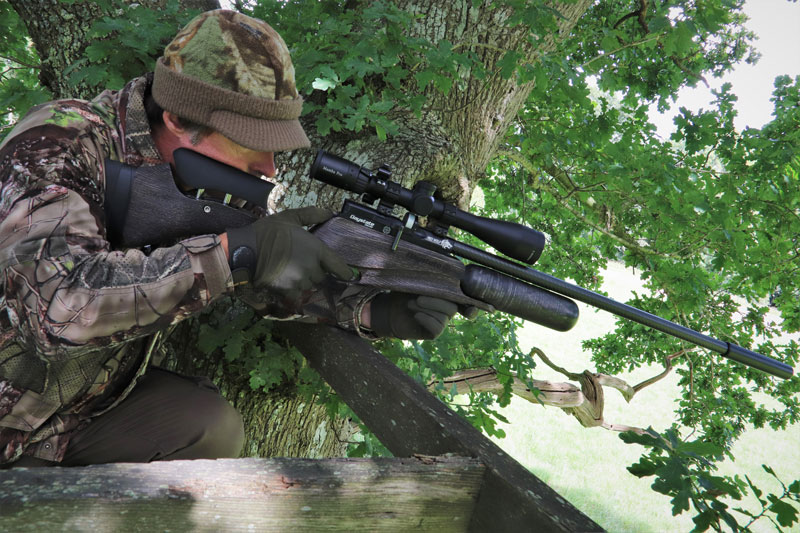Mat Manning reaches for his high-power Red Wolf Safari and takes up a lofty shooting position to bring some crafty corvids to book.
High-power air rifles have come on in leaps and bounds over recent years, and Daystate’s electronic internals make these beefed-up airguns incredibly smooth to shoot. My Red Wolf Safari is a fine example of that, it spits out 44.75-grain .30 calibre Rangemaster Emperor Lite pellets at close to 80ft/lb but its firing cycle still feels remarkably refined.
An airgun like this is a specialist tool, but the Safari has proved to be invaluable on the occasions that I need to call on it. One of those opportunities came along on my crop control rounds, and this airgun’s hefty knockdown power enabled me to build a bag on a day when I would have struggled with anything else.
My good friend Roe Norman who runs Park Farm Airgun Holidays on the Somerset/Wiltshire border also runs a pheasant shoot on the family farm. Roe’s management plan includes the sowing of several acres of cover crops which provide food and shelter for game birds and excellent habitat for farmland birds. Unfortunately, this year’s crops were also attracting some unwanted visitors.
A few weeks after the seed mixes were sown, corvids and pigeons descended on them. Crows, rooks, jackdaws and woodpigeons were pulling up the seedlings before they had time to establish so action needed to be taken to bring them to book. Roe put in a couple of sessions with his shotgun but the birds quickly wised-up and learned to back away after hearing one or two loud bangs. A more subtle approach was required.
Although a sub-12ft/lb airgun would have been the quietest option, I felt that it would lack the required range for this assignment. With wary corvids and pigeons landing out in an open field, shots were likely to be longer than usual. Also, birds have a habit of bobbing their heads up and down a lot when feeding on sprouting seeds, and that would make head shots extremely tricky. I needed something that would roll them over with a wallop to the upper body, and the .30 calibre Safari seemed the perfect tool for the job.
As luck would have it, Roe has a high seat positioned in an old oak tree that overlooks the cover crop. It is usually used for culling the numerous deer on this ground but it was also well-positioned for my purposes. Another useful fact was that, by targeting my quarry from an elevated shooting position, I would be taking shots at a downward angle which would greatly reduce the risk of ricochet – a really important consideration when you ramp up the power.
A couple of crows flapped away from the new cover crop when I arrived for my morning vigil but the general scene was much quieter than I had expected. After setting up a few crow and pigeon decoys on the recently drilled field, I clambered up the ladder that leads into the oak boughs and then pulled myself up onto the pallets that form the base of Roe’s lookout.
Before I even had time to put on my camouflage head net, a single jackdaw glided in over the trees that flank the cover crop and dropped down close to my crow decoys. Reaching for my rangefinder, I pinged the range at just over 50m. I had my MTC Mamba Pro scope set at 20x magnification, and, thanks to the support of the high seat’s sturdy wooden rails, the crosshairs soon settled on to the unsuspecting bird’s chest. I touched off the trigger, the muzzle let out a snap and the pellet struck home with a hollow thud which slammed the jackdaw over without a twitch.
The jackdaw came to rest belly-down which meant that, to my relief, I didn’t have to clamber down and reposition it. And it’s just as well that I hadn’t broken cover as another one dropped in just a moment later. That one was quickly added to the tally, and I still hadn’t even put on my head net. Up in the boughs, I appeared to be hidden in the shade of the dense summer foliage so I decided not to cover up for the time being, it was certainly more comfortable having my face unobscured in the warm conditions.
The level of concealment offered by the tree was highlighted when a pair of pigeons tried to perch in the branches just feet from where I was sitting. They were gliding in with legs outstretched ready to touch down when they clocked me, and immediately jinked away and clattered off into the distance.
A longer wait followed until a crow circled once over the decoys before swooping down into the field behind them. The wait had given me time to ping the range to my decoys and a few other prominent markers, so I didn’t have to reach for the rangefinder to know that this crow was just over 65m from my position. That’s a long shot but, thanks to the Safari’s almighty grunt, and the hours that I’d put in on the range to work out my aim points, the oversized pellet found its mark and absolutely poleaxed the seed-stealing corvid. This crow ended up with its legs in the air so I had to scrabble down the ladder and put it the right way up or it would almost certainly have spooked incoming birds. I also set the jackdaws into more lifelike poses before I hauled myself back up.
More birds, including a flurry of jackdaws, followed over the next couple of hours. Things then went extremely quiet, which is not unusual during the warmest part of long summer days, and I took the lull in activity as my cue to draw the session to a close. Thanks to the Red Wolf Safari, I had managed to account for seven jackdaws, two crows and a solitary pigeon. Like I said at the outset, when I need extra range and serious hitting power, the Safari is unbeatable.
Mat sets out crow and pigeon decoys to give incoming birds a sense of security.
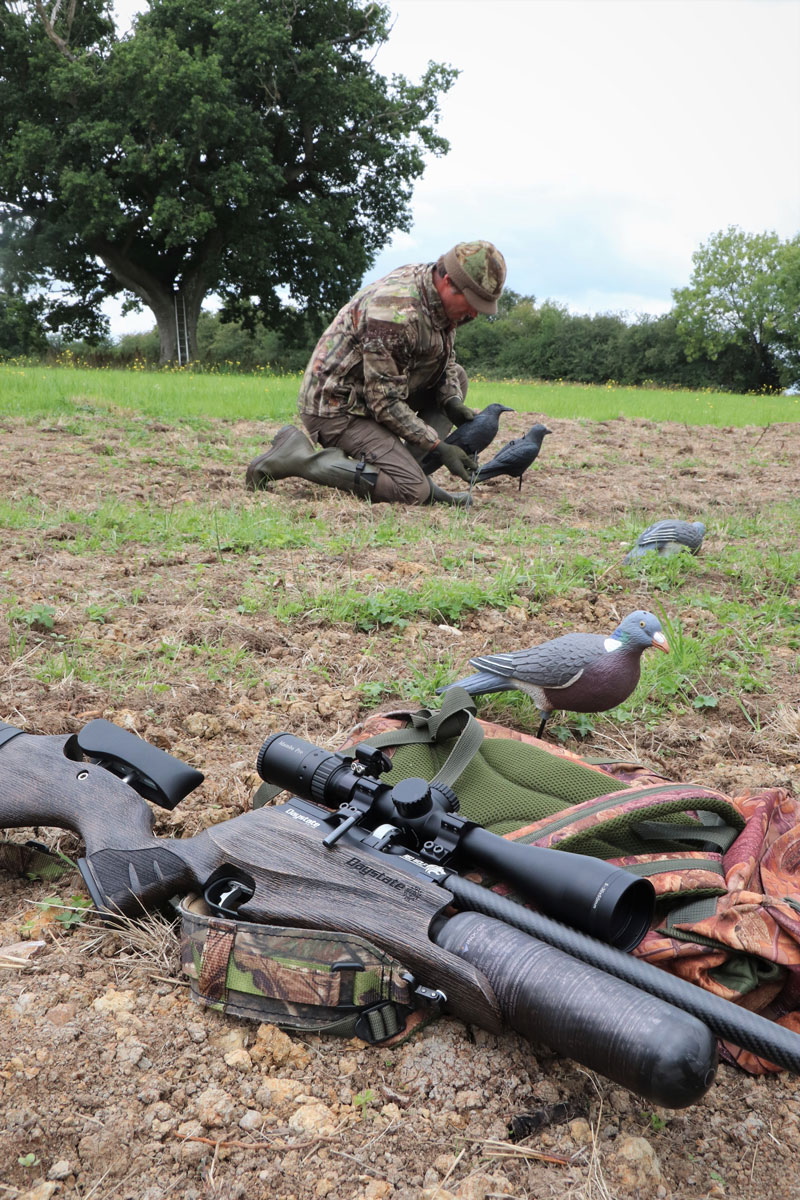
With shots likely to be taken at range, Mat opted for .30 calibre for maximum clout
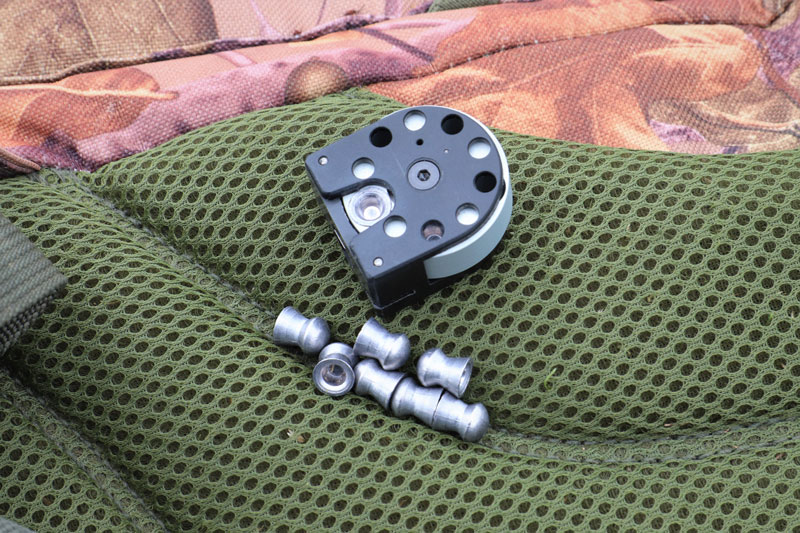
Mat clambers up the ladder and into the tree to reach his lofty vantage point
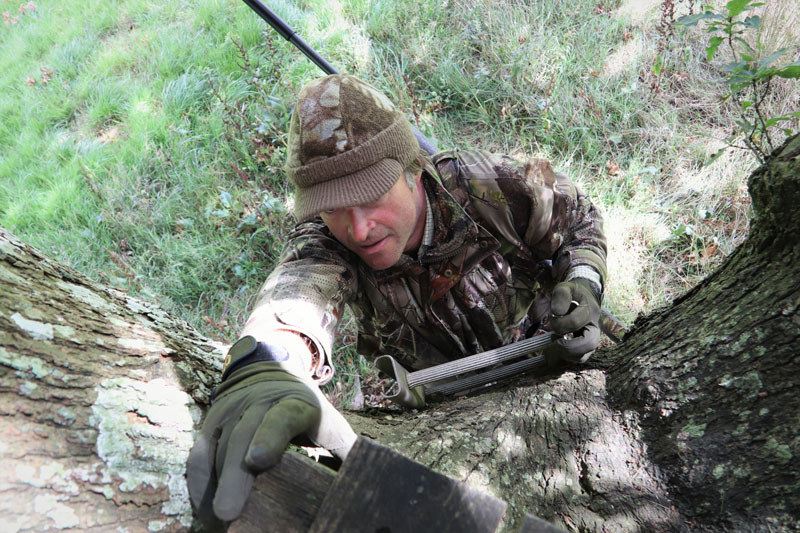
An early jackdaw swoops in and Mat lines up with the high-power Safari
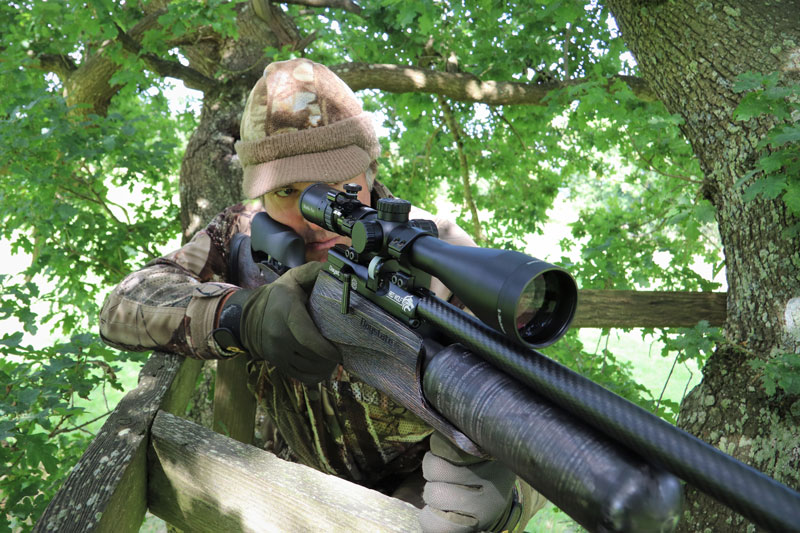
The combination of extreme hitting power and a high-mag scope enabled Mat to snipe unsuspecting corvids at considerable range
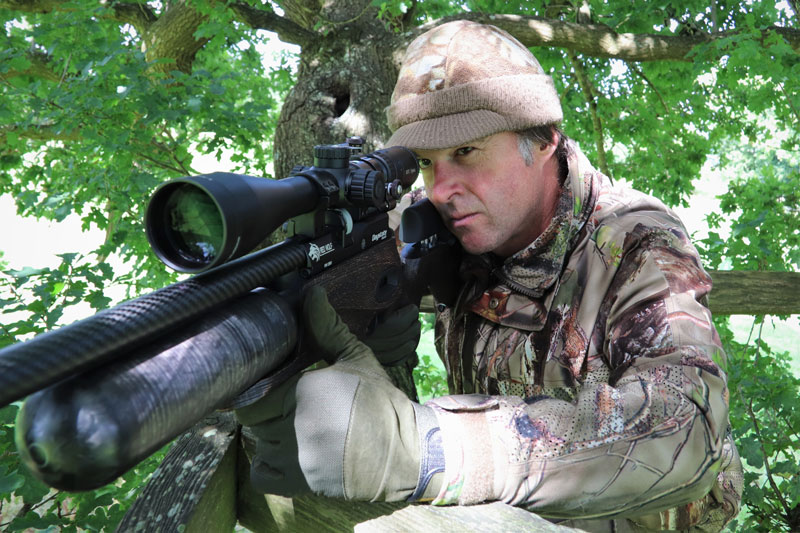
Shooting from on high gave shots a downward angle that greatly reduced the risk of ricochet
